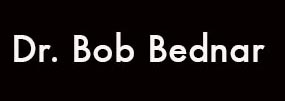| Visual/Material Communication |
 |
   |
| COM 75-474 | Spring 2024 |
| Visual/Material Communication |
 |
   |
| COM 75-474 | Spring 2024 |
discussion quotes:
Tagg: "the institutional uses of photography make us think photographs are truthful, not photographic techniques themselves." (Rose, 254)
Rose: The "emphasis on institutional apparatus and technologies . . . shifts attention away from the details of individual images . . . and towards the processes of their production and use." (254)
Rose: Foucauldian studies of the museum and the gallery "explore how visual images and objects are produced in particular ways by institutional apparatuses and technologies . . . and how various subjectivities are also produced, such as the 'curator' and 'the visitor.'" (256)
Rose: "discourse analysts of institutional power/knowledge focus not only on discourses about museums and galleries, but also on how those discourses are materialized in the forms of architecture and subject positions. Their concern is always with the intersection of power/knowledge and with the production of differentiated subject positions." (264)
review: discourse analysis looks for:
key themes
truth claims
complexity/contradiction
absences/silences
power/knowledge
key terms/concepts for this second variety of discourse analysis:
panopticon (252)
surveillance (252)
docile bodies (251)
institutional apparatus (253)
institutional technologies (253)
social subjectivities "produced" and "disciplined" by galleries/museums: benefactors, curators, visitors [Bennett, 1995] (261-262)
museums/galleries as "disciplining machines" (259)
museums vs. galleries (vs. other institutions of display, such as commercial museum shops)
disciplining technologies of display (producing "contemplative eyes" and objects to be contemplated visually):
display cases, open display, reconstructions, simulacra (264)
spatial organization: framing & hanging (234-5), room layout, decoration, immersion (265-7)
textual technologies: captions, labels, panels, catalogues (268-9)
architectural technologies: rooms, entrances, internal layout, spatial routing, building as destination (269-271; see also Bilbao text box, 278-281)
backstage: storage, archives, labs, libraries, offices, service areas, scholarly research facilities (272-275)
commercial services: museum/gallery shops, cafes, merchandising (250-1; see also Bilbao text box, 247-249)
disciplining the visitor: rules, spatial routing, seating, "appropriate" behavior (275-278)
transmedia (273-5)
methodological practices (257-258):
on site participant observation
interviews with designers, curators, directors
analysis of written texts, visual images, and architectural plans
archive research and published reviews/critiques (especially for historical research)
concern about the methodology: usually ignores audiencing.
issues:
lateral surveillance by other visitors as well as officials (276)
Workshop Images
Go to snapshot semiotics portfolio
discipline, resistance, indifference, and ignorance (278).
























